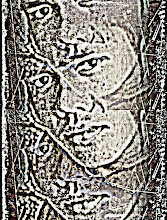Greatest hits from Herschel
The European Space Agency’s Herschel space telescope is designed to delve into the old, cold and dusty frontiers of the universe – but there’s nothing old, cold or dusty about the infrared images that the spacecraft is sending back.
Today’s spectacular view of the Rosette molecular cloud is one of the newest, hottest and brightest additions to ESA’s growing album of Herschel highlights.
Infrared astronomy is traditionally described as focusing on the "old, cold and dusty" - that is, the redshifted light from ancient galaxies on the edge of the observable universe, cool objects such as brown dwarfs that shine only in infrared wavelengths, and infant stars and planets still wrapped in shrouds of dust.
The Herschel probe, launched last May, is the most sensitive far-infrared telescope in operation. And its picture of the Rosette cloud, 5,000 light-years away in the constellation Monoceros, shows off the spacecraft's strengths. The different colors in the image represent variations in temperature that would be invisible to the naked eye, ranging from 387 degrees below zero Fahrenheit (-233 degrees Celsius or 40 Kelvin) to minus-441 degrees F (-263 C, 10 K).
The bright smudges in the picture are dusty cocoons that hide massive stars in the process of being born. The heft of the stars is what makes them so highly sought after.
"High-mass star-forming regions are rare and further away than low-mass ones," Frederique Motte of France's Laboratoire AIM Paris-Saclay said in today's image release. Motte is due to present the first scientific results from the Herschel Imaging Survey of OB Young Stellar Objects, or HOBYS, next month at the European Space Agency's annual ESLAB symposium.
OB-class stars like the ones seen in the Rosette cloud put out so much energy that they can spark a ripple effect of starbirth in the clouds of gas and dust that surround them. Astronomers would love to compare the patterns of starbirth seen in distant galaxies with that seen in our own Milky Way galaxy. That's why figuring out the Milky Way's scenarios for sparking new stars is one of Herschel's top jobs.
"Herschel will look at many other high-mass star-forming regions, some of them building stars up to a hundred times the mass of the sun," Motte said.
